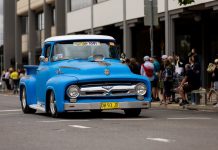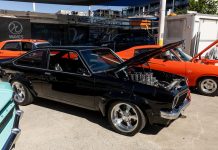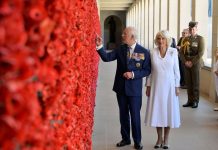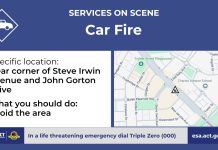In defence of the one hundred and sixteen:
I knew them well — most of them — these 116 trees. Walking in to work in the morning, I lurched from ink blot to ink blot of their shade; in the evening, I began the walk home strolling among birds I never saw anywhere else in the ACT. I remember also the cockatoos sounding off in the trees at daybreak at the close of the dawn memorial services. If you cut down these trees, these birds will be gone also, with another loss of habitat. Visitors from overseas will miss a fringe benefit of the Memorial, the landscape and life forms that make it essentially, uniquely, Australian.
They might miss also the trees along Treloar Drive that commemorate the fallen for whom at that time there was no commemorative niche in the official galleries. I do not know if these are still standing, still marked, or are among the 116 trees to be removed.
For me, the trees brought solace. I had the job with the highest negative content in the place — Editor — negative because I had to correct text, often describing painful events, in an attempt to ensure effectiveness of expression (preferably without adjectives and absolutely no euphemisms permitted). We worked together in a medium that dignifies the indignities of conflict. For particularly difficult pieces, I met with the writers on a bench under a tree — a rare species of oak, I believe — that grew in front of the administration building. A leaf from that tree still hangs above my desk. When I left this otherwise most remarkable job, I was given a silver necklace of eucalyptus leaves — commemorating “the allegedly diseased and dangerous trees” that had been felled for another parking lot.
The protest covered in the local media is by no means a pale imitation of remote actions to save rain forests. There is precedent: in 1971, a two-day protest in Stockholm saved thirteen elms that were to be taken down for subway construction. These still bear the scars of the demonstration, and now commemorate the first act of civil disobedience in Swedish history, an action which forced the government to take into account popular opinion — and defer to it.
As I understand it, the proposed removal of the trees is part of an enormous re-development program of the Memorial. The budget for this project left me, like many, gasping and questioning priorities: I now reside overseas in a country where homeless veterans regularly pan-handle at the entrance to the superhighway less than a mile from my home. I assume, as with all AWM gallery development and memorial construction, focus groups concerning the expansion have included past and serving members of the Australian Defence Force. Priorities aside, I wondered why the proposed galleries couldn’t be put underground, even under Anzac Parade: I don’t recall there being windows in the galleries in the main building, and we were always pressed for wall space. (But please keep the staff in offices with windows: anyone working with text and images needs natural light.)
Arguments have been made for the historicity of these trees; for my part I would argue for their sheer beauty in a mildly manicured space. As is, I always felt that the grounds enhanced the gravitas of the Memorial itself, particularly “at the going down of the sun / and in the morning”. Add a few benches, but leave the sculptures in the Sculpture Garden and the memorials on Anzac Parade. Why not let this undeveloped space remain a place where visitors can reflect upon what they have just witnessed, without it being further interpreted for them?
In defence of the trees – an afterthought
Why not have a gallery or a niche in one that addresses what Veterans’ Affairs and other parts of the government, as well as the ADF, do for returning armed services personnel?
I am reminded of a paper given at a conference on civil and military co-operation in disrupted states: it concerned the break-up of a medical unit in Rwanda, the PTSD in the members of this unit, and the alarming rise in PTSD among service personnel whose units had been broken up in order to disperse experience / expertise. This destroyed “mateship”, another hallmark of Australian defence personnel.
Carla Anne Jaffe (nee Schmidt)
Editor, Australian War Memorial, 1998-2000
Fairfield, Connecticut, USA
Have an opinion you want to share?
Email [email protected] with ‘Letters to the editor’ in the subject field. Please include your full name, street address (NFP) and suburb. Keep letters to 250 words maximum. Note, letters may be shortened if space restrictions dictate.
For more opinion:









